This publication is intended for pet owners of non-agricultural animals. It describes the benefits and risks associated with topical pesticides and collars intended to protect pets from parasites. It also describes how to protect pets from unintentional exposure to pesticides used in and around homes. Finally, instructions are provided on where to find assistance in case of an emergency.
Introduction
Blood-feeding arthropods like ticks and fleas can harm animal health and quality of life. These organisms are ectoparasites, meaning they must have a host to survive and live on the outside (rather than inside) of the host’s body. These parasites can also transmit diseases such as heartworm or tapeworm that live internally. As a pet owner, it is important to protect pets from these pests and the diseases they may transfer.
Flea and tick populations are healthy and thriving in Florida throughout much of the year. The most common flea on both cats and dogs is Ctenocephalides felis, the cat flea (Figure 1). However, there are several other species of flea in Florida, including dog, human, and sticktight fleas. They can cause itching and skin irritation and transmit tapeworms. Some pets may have allergic reactions to flea bites. Fleas will also bite humans and can be an overall nuisance, especially if they make themselves at home indoors.
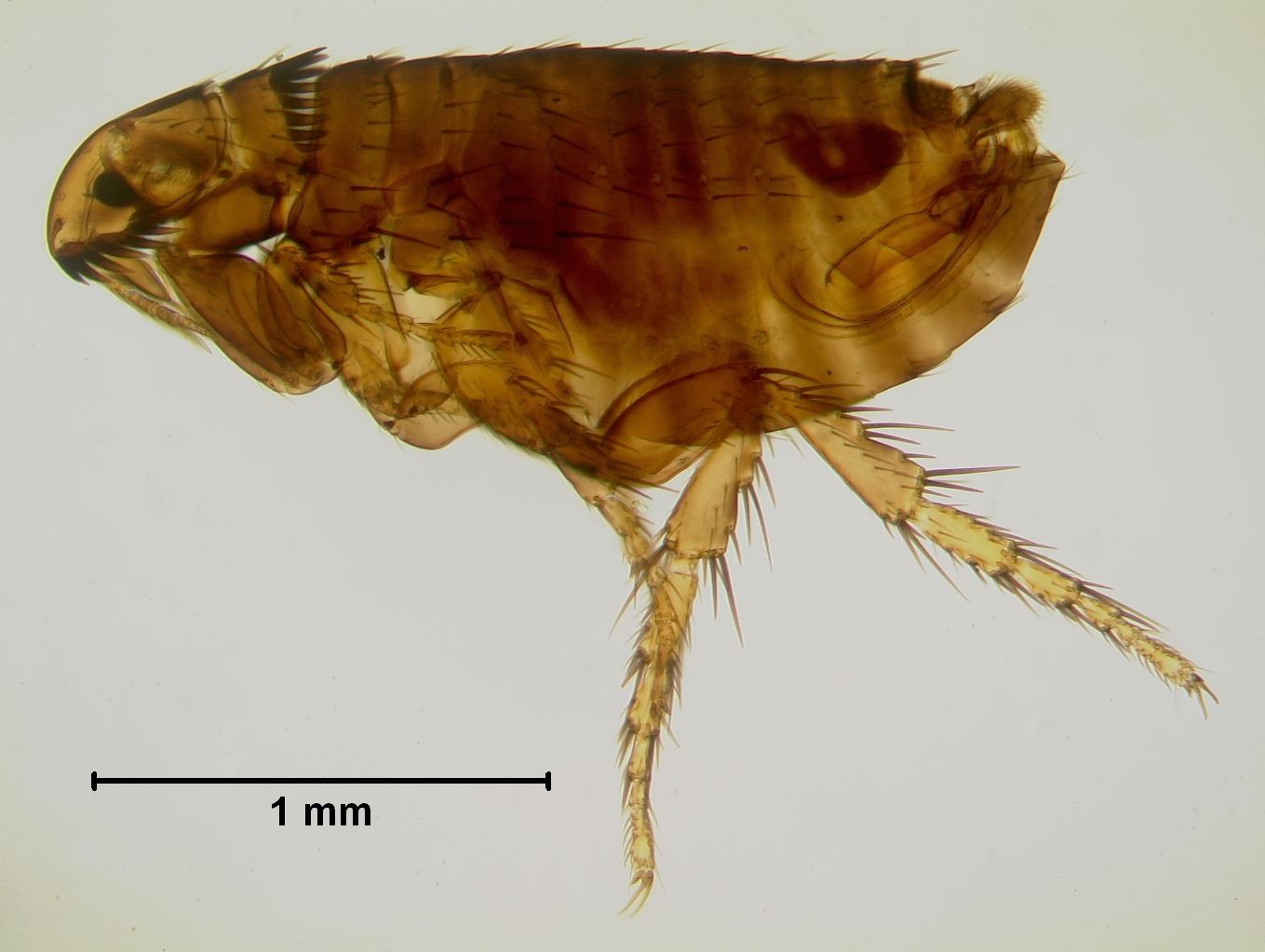
Credit: Lyle Buss, UF/IFAS
Fortunately, if pet owners follow a few simple guidelines, fleas and ticks can be managed with topical treatments and collars. It is important to recognize that both topical and collar treatments are classified and registered as pesticides and must be used accordingly. First, follow a veterinarian's advice. Each pet and its household are different, and not all pets may be treated with the same pesticides. For example, while rabbits are becoming popular pets, manufacturers have not released pesticide products specifically for bunnies. Also, it is not recommended to use topical pesticides on sick, pregnant, or otherwise sensitive pets. In these cases, talk to a veterinarian or check out the section below on “Alternatives to Pesticides.”
Reading the Label
Be sure to select the proper pesticide product for your pet. Just as medications can be specific for either dogs or cats, flea and tick treatments can be specific, too, and may not be interchangeable. To emphasize, cat products may be for cats only and dog products may be for dogs only. Read the outside of the product box carefully to ensure that it matches your pet (Figures 2A and 2B). Additionally, make sure your product selection aligns with your pet's weight. The weight range for the product should be listed boldly on the front of the packaging (Figures 2A and 2B). Next, make sure what is in the box matches the statement on the outside of the box (Figure 2C). Each component of the pesticide from the box to individual tubes of the product should be labeled with the product name and the species for which it is intended. Finally, always follow the entire label (Figure 2D). The label will describe how to use the product and how to store it. It will also suggest first aid in case of poisoning and provide phone numbers for additional information.
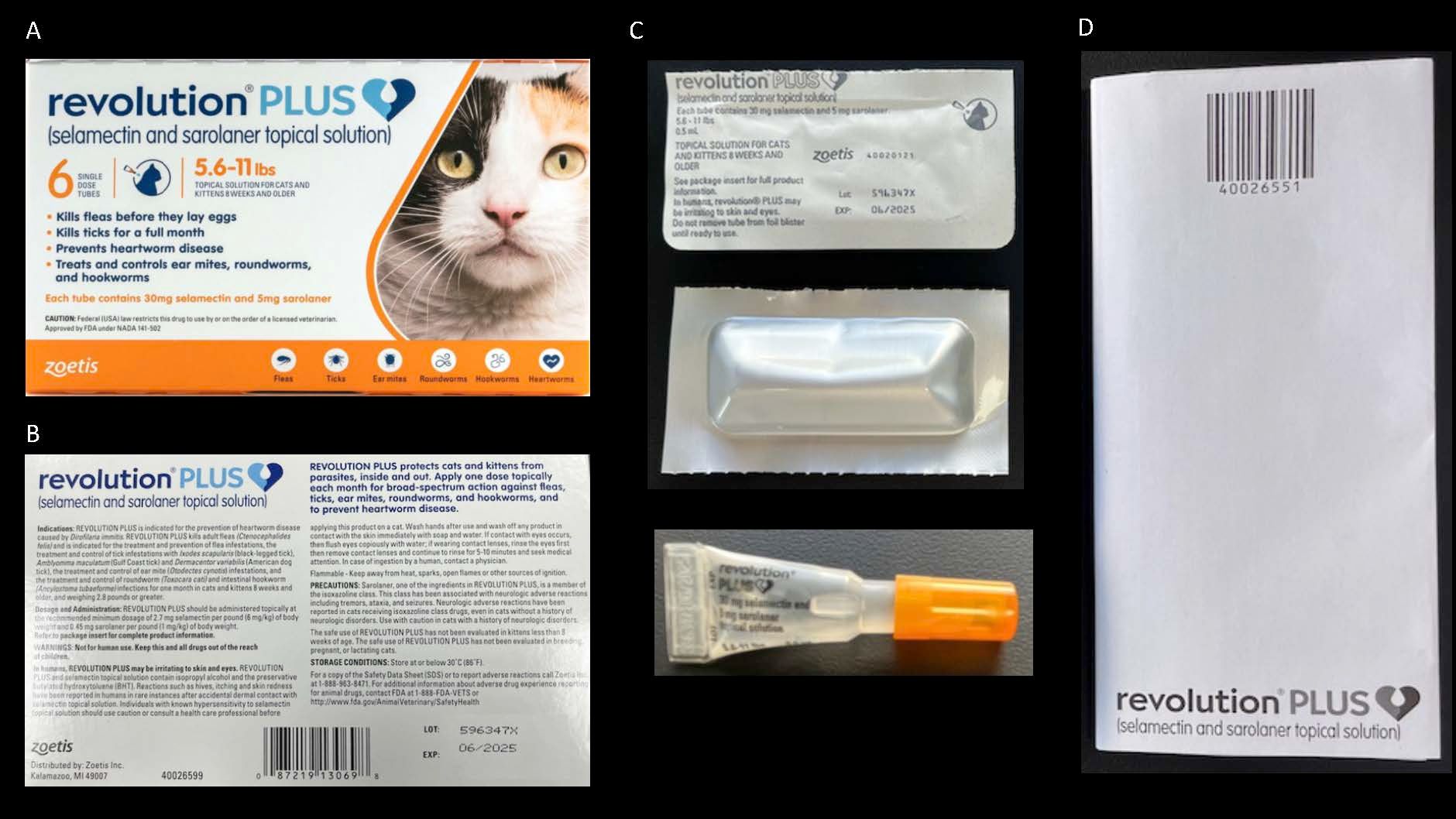
Credit: Emily Kraus, UF/IFAS
After Application
After reading the entire label (not just the box) and applying the topical agent or putting on the collar, observe your pet over the next hour. Watch out for common side effects of pesticide poisoning such as tremors, drooling, or seizures. If the product is used correctly there is little chance of these side effects. But each individual pet is different, and there is always some risk. If more than one dose was included in the box, store the leftovers in the original container. Individual applications may come in several tubes or dispensers (Figure 2C) and these individual dispensers/tubes will not have the full label information (Figures 2C and 2D). Store the pesticide in its original packaging according to the directions on the label until all the product has been used. Store pesticides (and all poisons) out of pets' reach.
Alternatives to Pesticides
If your pet is allergic to pesticides or if using pesticides seems like too much of a risk, there are alternatives. Some pets such as cats and rabbits can live happily as indoor-only pets. Remaining indoors reduces their exposure to fleas and ticks and helps prevent outbreaks. But whether pets are indoor or outdoor, be sure to maintain clean bedding. Most pet beds can be washed or have removable cases that can be washed. Tidy and vacuum your home regularly. Occasionally use a flea comb on pets and watch carefully for fleas and other ectoparasites present. Finally, even if your pet doesn’t enjoy it very much, bathing your pet occasionally can be a good addition to any management strategy. There are non-pesticidal soaps available that are sensitive to pets' skin.
Non-target Exposure
Aside from fleas and ticks, managing other pests inside and outside of the home can put pets at risk for unintentional or non-target exposure. Many people use pesticides for lawn care, gardening, or to manage household pests like ants and roaches. These pesticides can be absorbed into an animal’s bloodstream through their eyes, nose, and mouth. Pesticide residue on toys or plants can also adversely affect pets. To keep pets safe:
- Follow all label instructions.
- Do not allow your pet to enter the area where you have applied pesticide until the product label states that enough time has passed to make the area safe for people and pets.
- If the application is outdoors, be aware of pesticide drift.
- Don’t spray pesticides near pet food or water dishes.
- Make sure pets can’t access baits or bait stations (more about bait methods below).
- If after you apply a pesticide, a pet seems lethargic or shows symptoms like increased salivation, tremors, or convulsions, call your veterinarian immediately.
- Keep pesticides out of the reach of pets. Store products that you are saving for later inside a locked cabinet that they can’t get into.
If a commercial pesticide applicator has made an application indoors or outdoors, the professional applicator will tell you when it will be safe for pets to be in the area. In outdoor situations, they will use signage to indicate that a pesticide has been sprayed (Figure 3). The signs should indicate when a pet can enter the area. For many products, this is once the pesticide has dried.
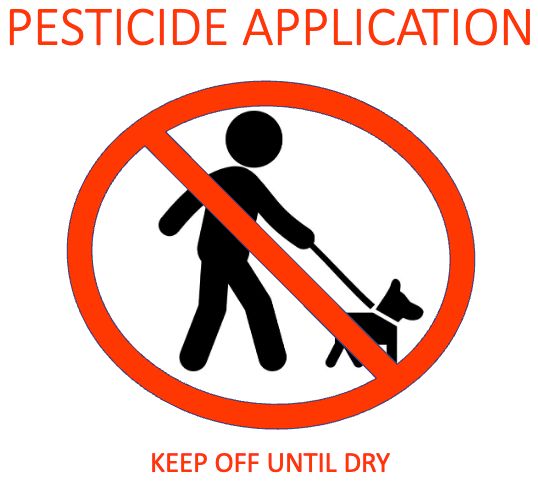
Credit: Emily Kraus, UF/IFAS
Baits
Homeowners will commonly use bait-style pesticides to manage ants, roaches, or rodents. When it comes to pesticides kept inside a trap or bait station, protect pets by reading and following the label. Ensure that pets cannot access any part of the bait station. This can be done by placing the bait stations out of reach of pets. Never place them near food.
Some pesticides are more hazardous than others. In all cases, the dose makes the poison. The risk or hazard posed by a pesticide is a product of the toxicity and the level of exposure the pet has had (Hazard = Toxicity x Exposure). Toxicity is the ability of the pesticide to cause illness or injury and exposure is how much of the product the pet has contacted or consumed. For example, many ant baits and bait traps are made from products that have low mammalian toxicity. With less toxic products, a pet would have to be exposed to a very large amount of the substance to put it in danger. With a more toxic product or a pet that has or may have consumed a large amount of product, there will be more reason for concern. Regardless of toxicity, though, it is safest for your pet to call your veterinarian or the number on the pesticide label if the animal has consumed any amount of a pesticide.
Rodenticides can be very dangerous to mammalian pets and wildlife because they are specifically designed to have higher toxicity to mammals. To safeguard pets and wildlife, the EPA is updating the regulation of these products. There are alternatives to rodenticides that are safer for pets. Follow all instructions on the label carefully. Rodenticide products for average consumers come in ready-to-use bait stations. DO NOT remove the pesticide from the bait station; it is illegal to do so. Pest-management professionals and commercial operations are required by law to secure rodenticides (Figure 4). Pets may also suffer secondary poisoning if they eat rodents that have consumed a rodenticide. If a pet has chewed or eaten a bait station, or if for some other reason you suspect pesticide poisoning, stay calm and call the veterinarian.
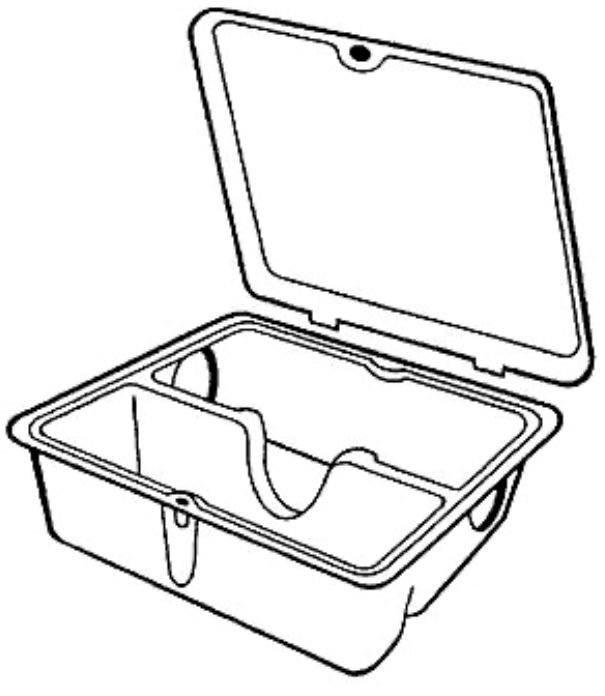
Credit: UF/IFAS
Getting Help
If a pet has been exposed to pesticide, there are several places to get assistance. If the pet is exhibiting symptoms of poisoning, call the veterinarian immediately. Share pesticide product information or describe the situation of exposure with as much detail on the suspected pesticide as possible. If the product packaging and label are available, they will include a phone number to call for adverse reactions. Finally, local poison control may be able to help if other options are not available.
Counterfeit Products
Counterfeit or fake products are less of a problem than they used to be, but some are still out there. The EPA has put a concerted effort into reducing the number of these products that make it into consumers' hands, but it is always best to purchase pesticides from reputable sources. All pesticides in the United States will have an EPA registration number, a label, and instructions in English (Figure 5). Ensure that the product inside the box matches the label on the box. Type of pet, amount of product or doses, and weight of intended pet should all match and be appropriate for your pet. If your pet has encountered a counterfeit product, call a veterinarian, or immediately go to an emergency vet. The veterinarian will need as much information as possible. Provide the box the product arrived in and any associated packaging, and tell the veterinarian where the product was purchased.
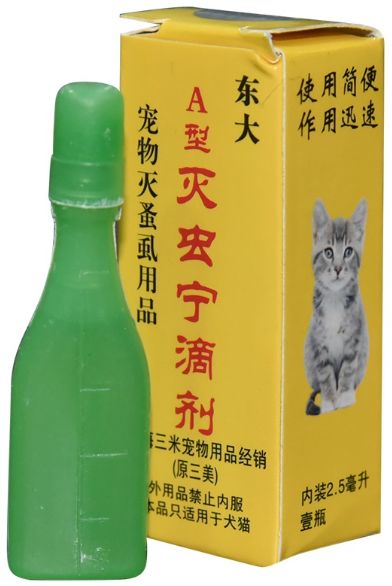
Credit: Karoutexpress.com
Summary
Pets' health is at risk from various internal parasites and ectoparasites in the environment. It is the responsibility of the pet owner to protect pets from the adverse health effects caused by these organisms. Pests can be managed with or without pesticides. If you use pesticides to protect your pets, be sure to read the label and follow all instructions. Aside from protecting pets and supporting their health, pesticides are also used for other reasons around the home. Pets must again be protected from these potential hazards. Following the labels on pesticide products and storing pesticides out of the reach of pets will reduce your pet’s risk to a reasonable level.
Additional Resources
https://www.epa.gov/pets/avoid-counterfeit-pesticide-products-dogs-and-cats
https://www.epa.gov/rodenticides/safely-use-rodent-bait-products